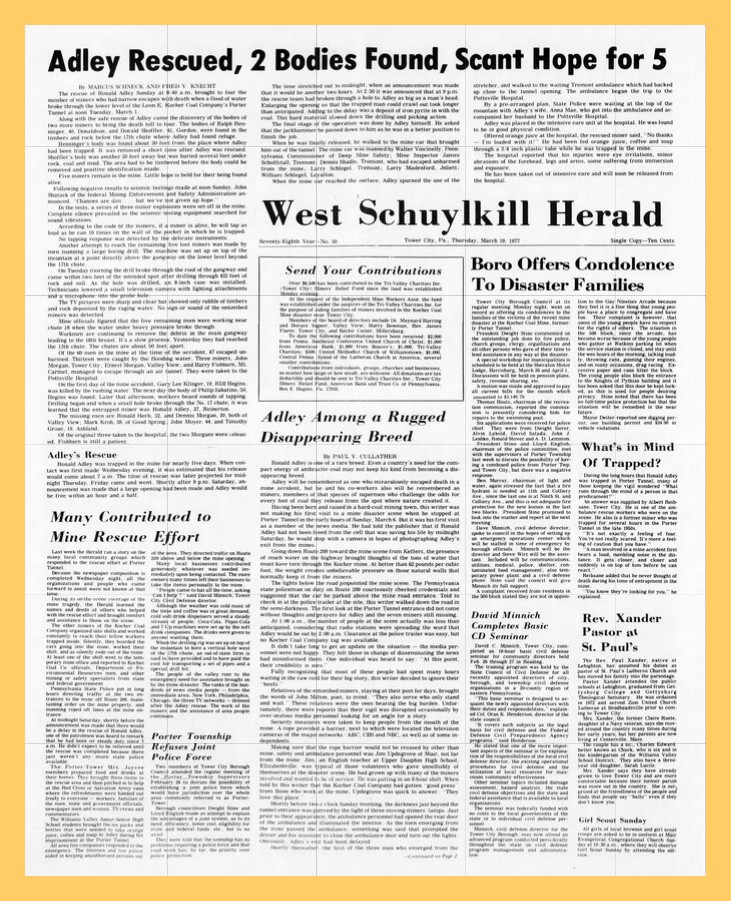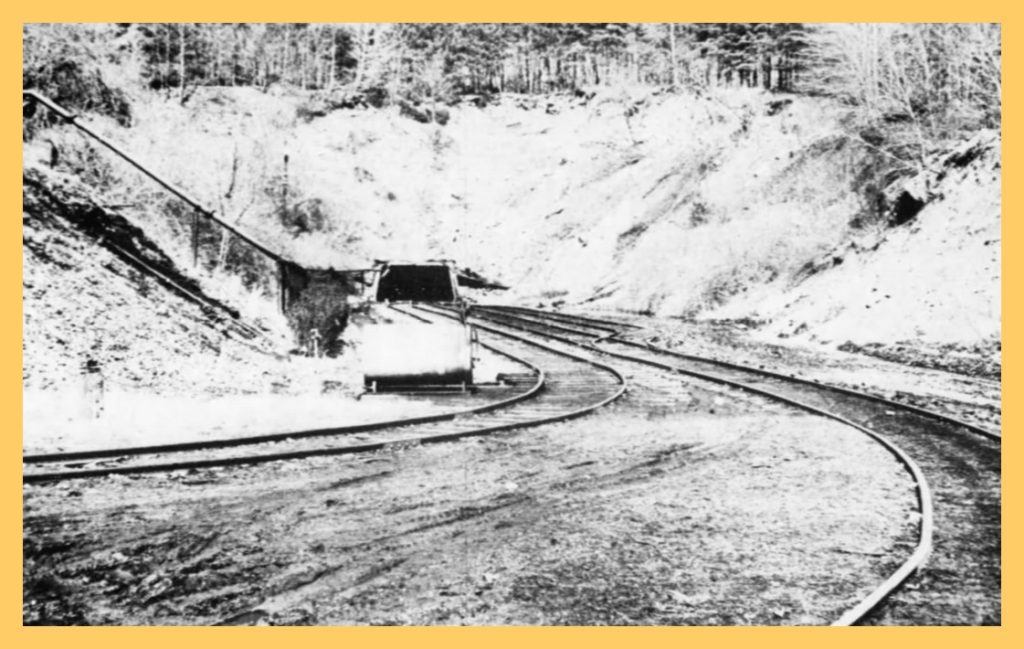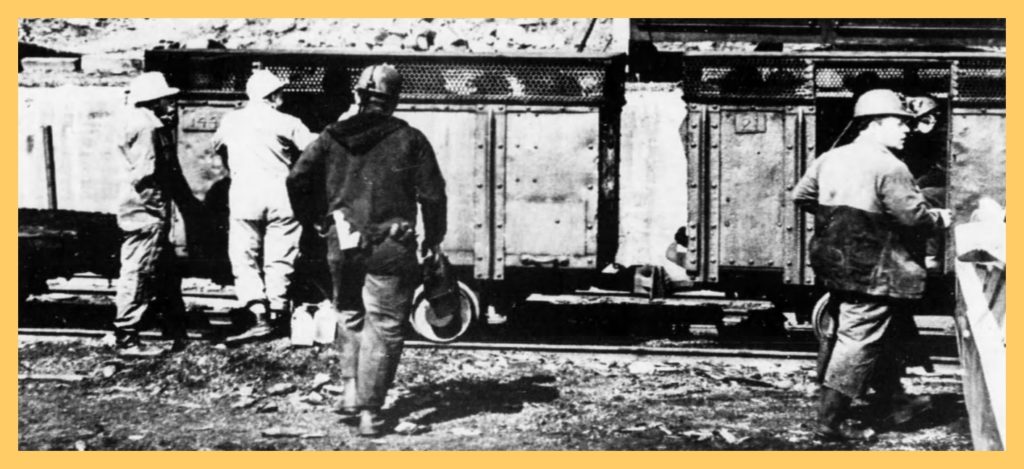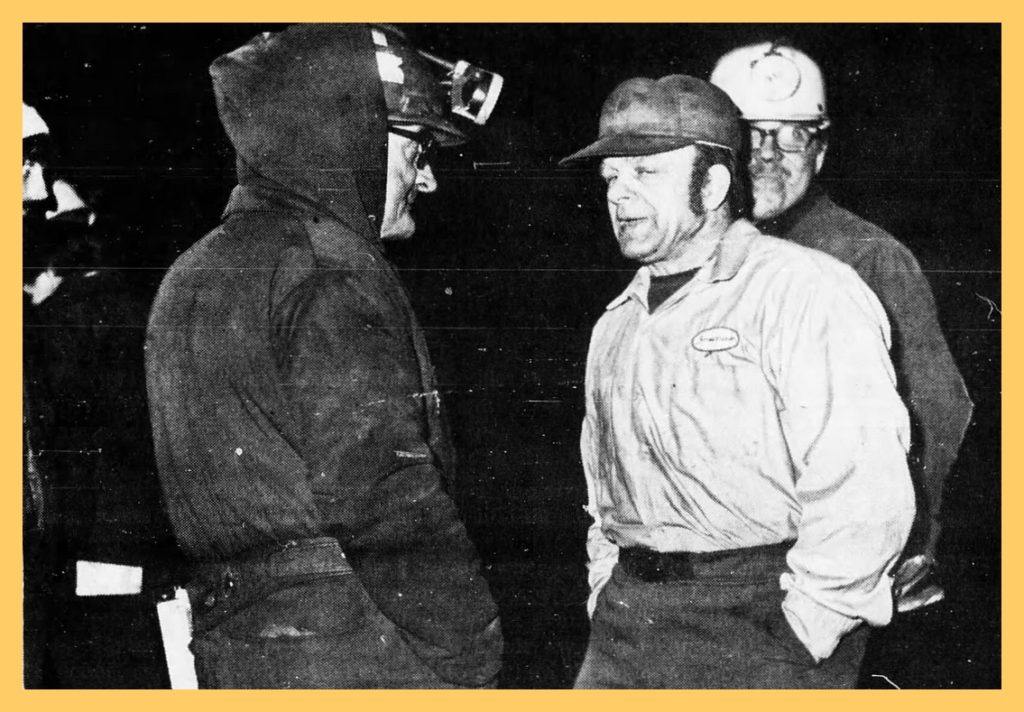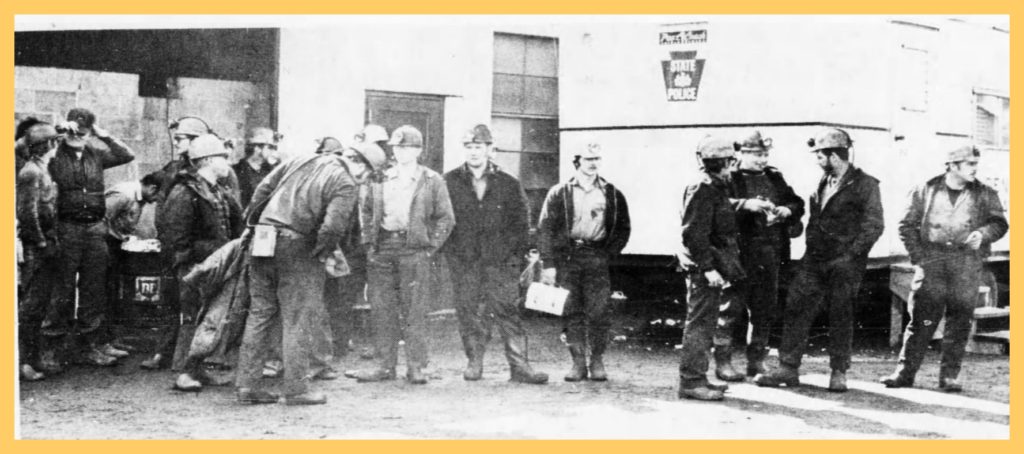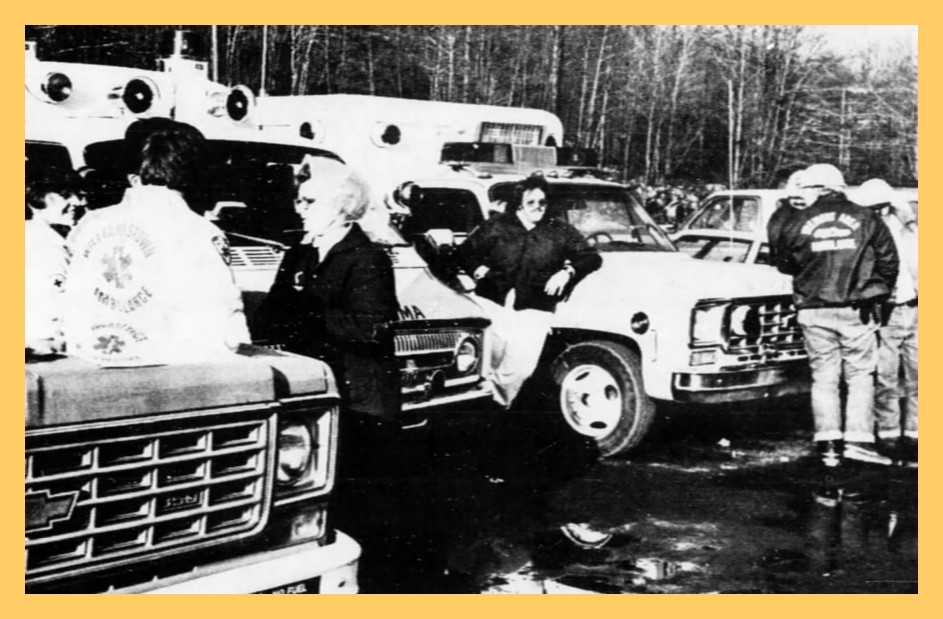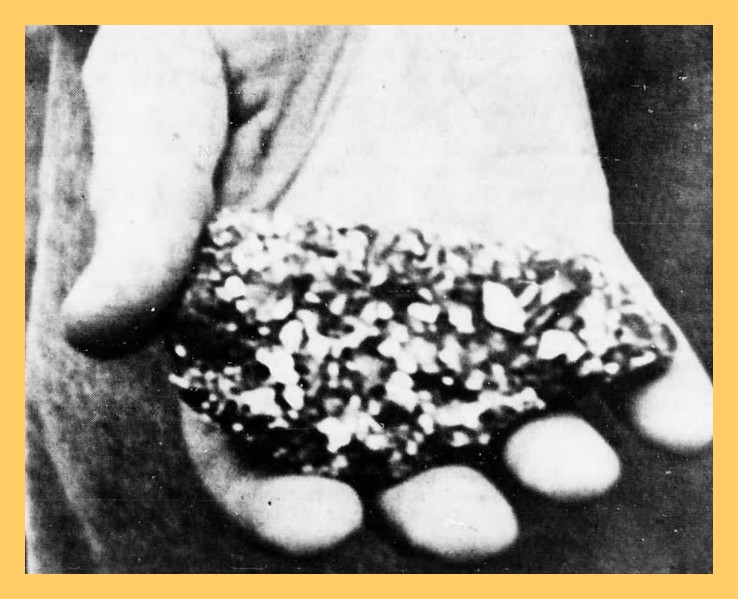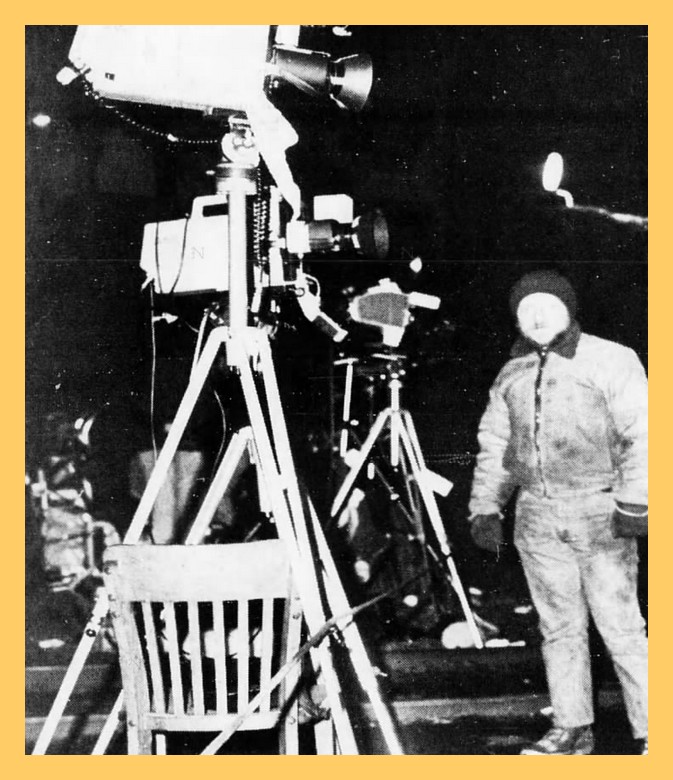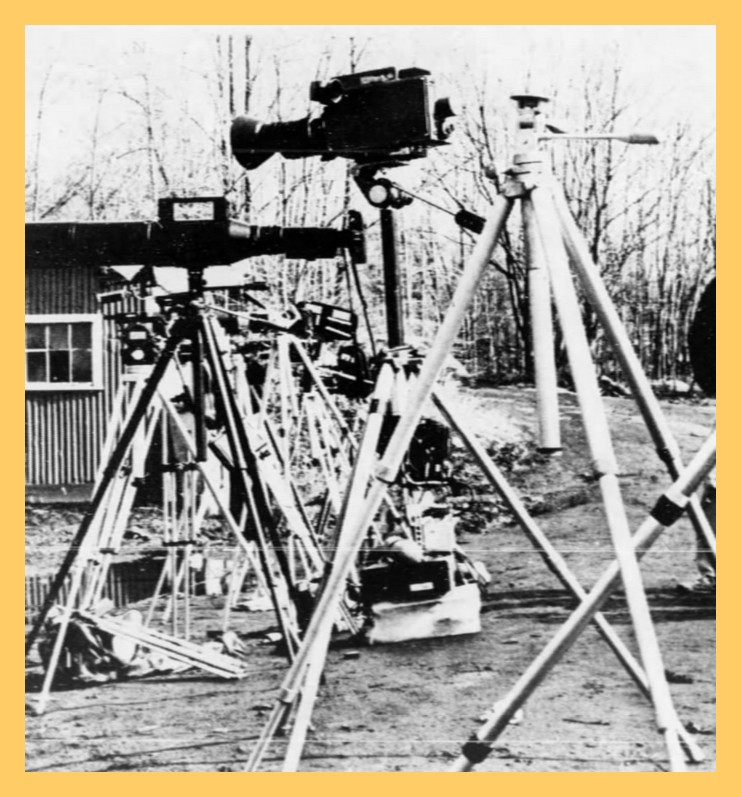The front page of the West Schuylkill Herald for March 10, 1977, a weekly newspaper published in Tower City, Schuylkill County, Pennsylvania. The articles in that paper are related to the mine accident that occurred at the Kocher Coal Mine and the attempts at rescuing the trapped miners and recovering the bodies of those who died.
__________________________________________________
ADLEY RESCUED, 2 BODIES FOUND, SCANT HOPE FOR 5
by Marcus Schneck and Fred V. Knecht
The rescue of Ronald Adley Sunday at 8:40 a.m. brought to four the number of miners who had narrow escapes with death when a flood of water broke through the lower level of the Leon E. Kocher Coal Company’s Porter Tunnel at noon Tuesday, March 1 [1977].
Along with safe rescue of Adley came the discoveries of the bodies of two more miners to bring the death toll to four. The bodies of Ralph Henninger, 40, Donaldson, and Donald Shoffler, 41, Gordon, were found in the timbers and rock below the 17th chute where Adley had found refuge.
Henninger’s body was found about 30 feet from the place where Adley had been trapped. It was removed a short time after Arley was rescued. Shoffler’s body was another 20 feet away away but was buried under several feet of rock, coal and mud. The area had to be timbered before the body could be removed and positive identification made.
Five miners remain in the mine. Little hope is held for their being found alive.
Following negative results to seismic testings made at noon Sunday, John Shutack of the federal Mining Enforcement and Safety Administration announces, “Chances are dim… but we’ve not given up hope.”
In the tests, a series of three minor explosions were set off in the mine. Complete silence prevailed as the seismic testing equipment searched for sound vibrations.
According to the code of the miners, if a miner is alive, he will tap as loud as he can 10 times on the wall of the pocket in which he is trapped.
No tapping response was detected by the delicate instruments.
Another attempt to reach the remaining five lost miners was made by men manning a large boring drill. The machine was set up on top of the mountain at a point directly above the gangway on the lower level beyond the 17th chute.
On Tuesday morning the drill broke through the roof of the gangway and came within two feet of the intended spot after drilling 432 feet of rock and soil. As the hole was drilled, an 8-inch case was installed. Technicians lowered a small television camera with lighting attachments and a microphone into the probe hole.
The TV pictures were sharp and clear but showed only rubble of timbers and rock deposited by the raging water. No sign or sound of the entombed miners was detected.
Mine officials figured that the five remaining men were working near chute 18 when the water under heavy pressure broke through.
Workmen are continuing to remove the debris in the main gangway leading to the 18th breast. It’s a slow process. Yesterday they had reached the 13th chute. Thye chutes are about 50 feet apart.
Of the 60 men in the mine at the time of the accident, 47 escaped unharmed. Thirteen men were caught by the flooding water. Three miners, John Morgan, Tower City; Ernest Morgan, Valley View; and Harry Fishburn, Mt. Carmel, managed to escape through an air tunnel. They were taken to the Pottsville Hospital.
On the first day of the mine accident, Gary Lee Klinger, 19, RD2 Hegins, was killed by the rushing water. The next day the body of Philip Sabatino, 50, Hegins, was found. Later that afternoon, workers heard sounds of tapping. Drilling began and when a small hole broke through the No. 17 chute, it was learned that the entrapped miner was Ronald Adley, 37, Reinerton.
The missing men are Ronald Herb, 32, and Dennis Morgan, 30, both of Valley View; Mark Kroh, 38, of Good Spring; John Moyer, 44, and Timothy Grose, 19, Ashland.
Of the original three taken to the hospital, the two Morgans were released. Fishburn is still a patient.
_______________________________________
ADLEY’S RESCUE
Ronald Adley was trapped in the mine for nearly five days. When contact was first made Wednesday, it was estimated that his release would come about 7 a.. The time of rescue was later projected for midnight Thursday. Friday came and went. Shortly after 9 p.m. Saturday, an announcement was made that a large opening had been made and Adley would be fee within an hour and a half.
The time stretched out to midnight, when an announcement was made that it would be another two hours. At 2:30 it was announced that at 9 p.m. the rescue team had broken through a hole as big as a man’s head. Enlarging the opening so that the trapped man could crawl out took longer than anticipated. Adding to the delay was a deposit of iron pyrite in with the coal. This hard material slowed down the drilling and picking action.
The final stage of the operation was done by Adley himself. He asked that the jackhammer be passed down to him as he was in a beter oisition to finish the job.
When he was finally released,he walked to the mine car that brought him out of the tunnel. The mine car was manned by Walter Vincinelly, Pennsylvania Commissioner of Deep Mine Safety; Mine Inspector James Schoffstall, Tremont; Dennis Shadle, Tremont, who had escaped unharmed from the mine; Larry Schlegel, Tremont; Larry Madenford, Joliett, William Schlegel, Loyalton.
When the mine car reached the surface, Adley spurned the use of the stretcher, and walked to the waiting Tremont ambulance which had backed up close to the tunnel opening. The ambulance began the trip to the Pottsville Hospital.
By a pre-arranged plan, State Police were waiting at the top of the mountain with Adley’s wife, Anna Mae Adley, who got into the ambulance and accompanied her husband to the Pottsville Hospital.
Adley was placed in the intenswive care unit at the hospital. He was found to be in good physical condition.
Offered orange juice at the hospital, the rescued miner said, “No thanks -I’m loaded with it.” He had been fed orange juice, coffee and soup through a 3/4 inch plastic tube while he was trapped in the mine.
The hospital reported that his injuries were eye irritations, minor abrasions of the forehead, legs and arms, some suffering from immersion and exposure.
He has been taken out of intensive care and will soon be released from the hospital.
_______________________________________
ADLEY AMONG A RUGGED DISAPPEARING BREED
By Paul V. Cullather
Ronald Adley is one of a rare breed. Even a country;s need for the compact energy of anthracite coal may not keep his kind from becoming a disappearing breed.
Adley will be remembered as one who miraculously escaped death in a mine accident, but he and his co-workers also will be remembered as miners, members of that species of supermen who challenge the odds for every foot of coal they release from the spot where nature created it.
Having been borne and raised in a hard-coal mining town, this writer was not making his first visit to a mine disaster scene when he stopped at Porter Tunnel in the early hours of Sunday, March 6 [1977]. But it was his first visit as a member of the news media. He had told the publisher that if Ronald Adley had not been freed from the cell that was saving his life by midnight Saturday, he would stop with a camera in hopes of photographing Adley’s exit from the mines.
Going down Route 209 toward the mine scene from Keffers, the presence of much water on the highway brought thoughts of the tons of water that must have torn through the Kocher mine. At better than 62 pounds per cubic foot, the weight created unbelievable pressure on those natural walls that normally keep it from the miners.
Te lights below the road pinpointed the mine scene. The Pennsylvania State policemen on duty on Route 209 courteously checked credentials and suggested that the car be parked above the mine road entrance. Told to check in at the police trailer at the site, this writer walked down the road in the semi-darkness. The first look at the Porter Tunnel entrance did not come without thoughts and prayers for Adley and the seven miners still missing.
At 1:00 a.m., the number of people a the scene actually was less than anticipated, considering that radio stations were spreading the word that Adley would be out by 2:00 a.m. Clearance at the police trailer was easy, but no Kocher Coal Company tag was available.
It didn’t take long to get an update on the situation – the media personnel were not happy. They felt those in charge of dissemination the news had misinformed them. one individual was heard to say, “At this point, their credibility is zero.”
It didn’t take long to get an update on the situation – the media personnel were not happy. They felt those in charge of dissemination the news had misinformed them. one individual was heard to say, “At this point, their credibility is zero.”
Fully recognizing that most of these people had spent many hours waiting in the raw cold for their big story, this writer decided to ignore their “beefs.”
Relatives of the entombed miners, staying at their post for days, brought the words of John Milton, poet, to mind: “They also serve who only stand and wait.” These relatives were the ones bearing the big burden. Unfortunately, there were reports that their vigil was disrupted occasionally by over-zealous media personnel looking for an angle for a story.
Security measures were taken to keep people from the mouth of the mine. a rope provided a barrier, next to which were located the television cameras of the major networks, ABC, CBS and NBC, as well as of some independents.
Making sure that the rope barrier would not be crossed by other than mine safety and ambulance personnel was Jim Updegrove of Muir, not far from the mine. Jim, an English teacher at Upper Dauphin High School, Elizabethville, was typical of those volunteers who gave unselfishly of themselves at the disaster scene. He had grown up with many of the miners involved and wanted to be of service. He was putting in an 8-hour shift. When told by this writer that the Kocher Coal Company had gotten “good press” from those who work at the mine, Updegrove was quick to answer: “The love this place.”
Shortly before two o’clock Sunday morning, the darkness just beyond the tunnel entrance was pierced by the light of three moving miners lamps. Just prior to their appearance, the ambulance personnel had opened the rear door of the ambulance and illuminated the interior. As the men emerging from the mine passed the ambulance, something was said that prompted the driver and his assistant to close the ambulance door and turn out the lights. Obviously, Adley’s exit had been delayed.
Shortly thereafter the first of the three men who emerged from the mine. Walter Vincenelly, Pennsylvania Commissioner of Deep Mine Safety, met with federal mine officials and shortly thereafter the news media was briefed on the reason for the delay in freeing Adley.
The text, in part, as recorded by WAM, Pottsville, was as follows:
Down below they broke through a hole about the size of Mr. Adley’s face and then starated to widen that hole and ran into the sulphur balls that are holding them up. The message was sent to the surface was, “We broke through. Get the ambulance ready and have a doctor here at 9:30.” Acting on the basis of that information, and not knowing that they were going to run into trouble completing the hole to shoulder width, which is what they wanted. They started with a 4-foot hole and trying to narrow down to about 20 inches, 24 inches, shoulder width, just enough to get him through, we went into action. The ambulance was moved, the doctor was summoned, the state police increased their precautions, and I notified the news media.
The president of the company was told the same thing. The MESA supervisor was told the same thing. We all had the same information. We all put the same assumptions on it. Then we stood outside and waited. There was no communication from inside indicating any problems. The people topside apparently didn’t call down to ask how things were going. And so time passed… until we finally realized that we were not living up to the time schedules we had thought were accurate. And I guess it wasn’t until we finally decided it was time for you to head for your cars and get warm, and Mr. Vincinelly from the state to come outside and tell us what’s going on, that we had the idea that there was that much trouble at the hole.
At the conclusion, news medial personnel asked for, but didn’t get, approximately time for Adley’s emergency from the mine. Nobody at that point figured that it would not be for another six hours.
Leaving the scene at 2:30 a.m., this writer followed the route that was to be traversed some six hours later by the ambulance carrying a freed Ronald Adley to the Pottsville Hospital.
Enroute to mass at 9:00 a.m., Sunday, the writer received the word that Adley, who was miraculously saved, was on his way to the hospital. At St. Ambrose Church, Schuylkill Haven, the organist’s first rendition echoed the thoughts of many. She played, “How Great Thou Art.”
The discovery of two more bodies in the disaster may have dimmed the hopes for the safe return of the missing five miners, but the success of the effort to free Adley indicates that those entrusted to the rescue effort know their business.
____________________________________
UNITED CHURCH OF CHRIST GIVES $2,000 FOR MINE VICTIMS
The Conference minister for the Pennsylvania Southeast Conference, United Church of Christ, Dr. John C. Shetler, designated Sunday, March 6 [1977] as “A Day of Prayer” for the miners trapped in the anthracite mine at Tower City.
The 218 congregations in the Conference’s seven county area joined in spoken and silent prayers for the miners, their families and the persons involved in the rescue operation. The call to prayer also urged individuals to continue their personal prayers beyond Sunday and on into the future.
In a letter to the United Church of Christ churches in the Tower City area, Dr. Shetler wrote: “Pastors and members of Pennsylvania Southeast Conference share in your concern and pain suffered in the mine disaster. We know the sense of pain and loss is overwhelming. We also know that God shares with you in the heaviness of the great loss. God through the spirit of the risen Christ will bear you up and make it possible to live today, tomorrow, and in the future.”
A gift of $2,000 has been given by the Conference, and was presented by Dr. Shetler on Saturday, March 5. Local churches and individuals are encouraged to provide additional contributions which will be directed by the Conference Office to the miners’ families. All money gifts may be sent to Pennsylvania Southeast Conference, UCC, 620 Main Street – Box G, Collegeville, Pennsylvania 19426.
_____________________________________
SEND YOUR CONTRIBUTIONS
Over $6,500 has been contributed to the Tri-Valley Charities Inc. (Tower City) Miners’ Relief Fund since the fund was established Monday evening.
At the request of the Independent Mine Workers Association, the fund was established under the auspices of the Tri-Valley Charities Inc. for the purpose of aiding the families of miners involved in the Kocher Coal Mine disaster near Tower City.
Members of the board of directors include Dr. Maynard Harring and Horace Sagner, Valley View; Harry Bowman, Rev. James Flurer, Tower City; and Baylor Custer, Millersburg.
Todate the following contributions have been received: $2,000 from Pennsylvania Southeast Conference United Church of Christ; $1,000 from American Bank; $1,000 from Boscov’s; $1,000, Tri-Valley Charities; $500, United Methodist Church of Williamstown; $1,000 Central Pennsylvania Synod of the Lutheran Church in America; several smaller contributions.
Contributions from individuals, groups, churches and businesses, no matter how large or how small, are welcome. All donations are tax deductible and should be sent to Tri-Valley Charities Inc., Tower City Miners’ Relief Fund, American Bank and Trust Company of Pennsylvania, Box 8, Hegins, Pennsylvania 17938.
___________________________________
WHAT’S IN MIND OF TRAPPED?
During the long hours that Ronald Adley was trapped in Porter Tunnel, many of those keeping the vigil wondered “What runs through the mind of a person in that predicament?”
An answer was supplied by Albert Reibsane, Tower City. He is one of the ambulance rescue workers who were on the scene. He also is a former miner who was trapped for several hours in the Porter Tunnel in the late 1950s.
“It’s not exactly a feeling of fear. You’re not really scared. It’s more a feeling of caution that you have.”
“A man involved in a mine accident first hears a loud, rumbling noise in the distance. It gets closer, and closer and suddenly is on top of him before he can react.”
Reibsane added that he never thought of death during his time of entrapment in the mine.
“You know they’re looking for you,” he explained.
_________________________________________
MANY CONTRIBUTED TO MINE RESCUE EFFORT
Last week the Herald ran a story on the many local community groups which responded to the rescue effort at Porter Tunnel.
Because the newspaper composition is completed Wednesday night, all the organizations and people who came forward to assist were not known at that time.
During its on-the-scene coverage of the mine tragedy, the Herald learned the names and deeds of others who helped with the rescue effort and brought comfort and assistance to those on the scene.
The other miners of the Kocher Coal Company organized into shifts and worked constantly to reach their fellow workers trapped inside. Silently, the boarded the cars going into the mine, worked their shift, and as silently rode out of the mine. At least one of the shift went to the temporary mine office and reported to Kocher Coal Company officials. Department of Environmental Resources men, and other mining or safety specialists from state and federal government.
Pennsylvania State Police put in long hours directing traffic at the two entrances to the mine off Route 209, maintaining order on the mine property, and manning roped off lines at the mine entrance.
At midnight Sasturday, shortly before the announcement was made that there would be a delay in the rescue of Ronald Adley, one of the patrolmen was heard to remark that he had been on steady duty since 7 a.m. He didn’t expect to be relieved until the rescue was completed because there just weren’t any more state police available.
The Porter-Tower Mrs. Jaycee members prepared food and drinks at their homes. They brought these items to the rescue area and then pitched in to help at the Red Cross or Salvation Army vans where the refreshments were handed out freely to everyone – workers, families of the men, mine and government officials, newspaper men and women, TV crews and commentators.
The Williams Valley Junior-Senior High School students brought the ice packs and bottles that were needed to take orange, juice, coffee and soup to Adley during his imprisonment in the Porter Tunnel.
All area fire companies responded to the emergency. The firemen and fire police aided in keeping unauthorized persons out of the area. They directed traffic on Route 209 above and below the mine opening.
Many local businesses contributed generously whatever was needed immediately upon being contacted. The store owners many times left their businesses to take the items personally to the mine.
“People came to bat all the time, asking ‘Can I help’?” said David Minnich, Tower City Civil Defense director.
Although the weather was cold most of the time and coffee was in great demand, cold soft drink dispensers served a steady stream of people. Coca-Cola, Pepsi-Cola and 7-Up machines were set up by the soft drink companies. The drinks were given to anyone wanting them.
When the drilling rig was set up on top of the mountain to bore a vertical hole west of the 17th chute, an out-of-state firm is said to have provided and to have paid the cost for transporting a set of pipes and a special drill bit.
The people of the valley rose to the emergency need for assistance brought on by the mine disaster. The ranks of the hundreds of news people — from the immediate area, New York, Philadelphia, Chicago, the three TV networks — thinned after the Adley rescue. The work of the miners and the assistance of area people continues.
_______________________________________
THE LONG VIGIL AT PORTER TUNNEL
(Photo Essay by Marcus Shneck)
Entrance to Porter Tunnel
_____________________________________
Miners Ready to Board Trip That Will Take Them Into the Mine
_____________________________________
Miners Finished Working. Waiting At Pump House.
____________________________________
Miners Who Participated In Rescue Work
_______________________________________
Ambulance at Rescue Units
____________________________________
Iron Pyrite Which Delayed Rescue
___________________________________
Jim Updegrove, Muir, volunteer security patrol member, stands near major TV network cameras outside the Porter Tunnel.
____________________________________
TV CAMERAS AT READY POSITION
_____________________________________
News articles and photos obtained through Newspapers.com.
Corrections and additional information should be added as comments to this post.
